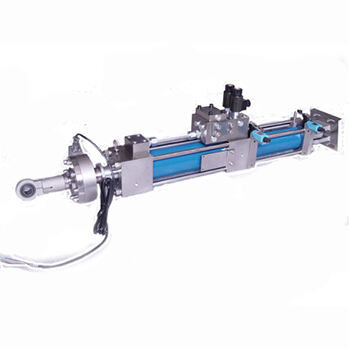One of the types is a hydraulic cylinder which provides power to heavy equipment, allowing them to execute functions that would otherwise be too laborious. Comprised of a number of different parts, these cylinders all work together to deliver high performance. Well you are the better judge of that, let's get int deeper explanation about how hydraulic cylinders works so we can have a clear picture.
Understanding the Components of Hydraulic Cylinders
There are a few core parts that make up a hydraulic cylinder: the Cylinder Barrel, Piston, Piston Rod...Seals and End Caps. The cylinder barrel is a chamber where the piston moves within and it contains... you guessed it, hydraulic fluid. The piston is usually a long, metal cylinder that moves inside the cylindrical metallic barrel. The piston rod is connected to the piston and runs outside of a cylinder barrel, then it works together with the pistons. Seals are also important to ensure that no fluid is lost while end caps stabilize and hold everything together.
Hydraulic Cylinder Components Material
Hydraulic cylinder parts are made by using robust materials, these materials that kinds of work in making those hydraulic forms for long lasting. The type of steel or aluminum used in the construction varies with each cylinder barrel. Typically an aluminum or steel piston remains smooth and straight for a ride up the bore of its partner, the cylinder barrel. The piston rod, usually made from chrome-plated steel and subject to the forces introduced by that hard-working piston. Seals are normally made using a flexible rubber or plastic that is able to hold up under very high pressure, as well as in temperatures. End caps (which can be stainless steel, aluminum or plastic) are also designed for strength to hold all components securely.
Inside a hydraulic pressure cylinder
The hydraulic cylinder contains a fluid, usually being oil or water. As the piston is displaced, this fluid is pushed through small openings to begin moving another rod made of piston. This methodical procedure is what allows the hydraulic cylinder to be centrifugal at performing its duties. After the fluid leaves and exits from one side of a cylinder, it goes back to reservoir wherefrom can be again drawn in as required. The action makes the hydraulic cylinder work and this cycle of fluid will be a continuous one.
In Conclusion
A hydraulic cylinder is a complex system with many components interacting together. If we know what each part does, it is possible to increase performance of the hydraulic cylinder. Every part of a hydraulic cylinder is designed to work together-from the unsparing steel barrel and fluid-compatible seals and end caps.

 EN
EN
 AR
AR
 BG
BG
 HR
HR
 CS
CS
 DA
DA
 NL
NL
 FI
FI
 FR
FR
 DE
DE
 EL
EL
 HI
HI
 IT
IT
 JA
JA
 KO
KO
 NO
NO
 PL
PL
 PT
PT
 RO
RO
 RU
RU
 ES
ES
 SV
SV
 CA
CA
 TL
TL
 IW
IW
 ID
ID
 LV
LV
 LT
LT
 SR
SR
 SK
SK
 UK
UK
 VI
VI
 HU
HU
 TH
TH
 TR
TR
 FA
FA
 MS
MS
 GA
GA
 CY
CY
 KA
KA



